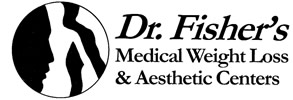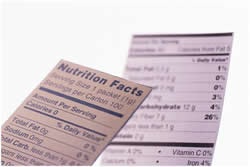 |
161 Bustleton Pike Feasterville, PA 19053 (215) 987-4592 more locations here... |
| How To Spot Hidden Sugar on Food Labels! |
 |
| Friday, 01 July 2011 |
 Eating too much sugar is not healthy for you. Most people would agree with this. Yet, we are still getting way too much of it in our diet. Why? Eating too much sugar is not healthy for you. Most people would agree with this. Yet, we are still getting way too much of it in our diet. Why?
If you have ever read a food label then you know how confusing they can be. Once you get past simple ingredients like milk, water, corn and cheese, things begin to get a little dicey. How do you read those labels? Sugar is a carbohydrate. It is called a simple carbohydrate because it is metabolized easier. It doesn't need extra energy to be broken down. In fact, if you've ever had a sugary snack, your blood sugar spikes right away. You get energy for about thirty minutes and then feel like you are sinking through the floor. Sugars are also used to preserve foods. You normally think of salt, but sugar is used in processed foods in other forms. If you see the word "sugar" on the label you may think twice about using the product. But, when other words are used for sugar, it can be harder to distinguish. Start by looking at the carbohydrate count on the nutrition label. Under carbohydrates you will see a total carbohydrate measurement and then a breakdown to sugars and fiber. If the sugar number is most of the carbohydrate number then there is more than a lot of sugar in that food item. Now, look at the ingredient list. Sugar has many scientific names. Foods that end in "-ose" or "-ase" contains sugar. Substances like fructose, maltose and sucrose are all trade names for sugar. Also look for sweet ingredients like molasses, syrup (of any kind), agave nectar and cane sugar. Some foods have natural sugars. If a food contains strawberries, the label would have strawberries on the list. Strawberries have natural sugar and that is not listed separately because it is a part of the fruit. There are also sugar alcohols like sorbitol and xylitol. They are composed of sugar and alcohol groups in their chemical make-up. They have less calories and less of an impact on your blood sugar. Xylitol is used in sugarless gum instead of other sweeteners with side effects. But, you do need to note the amount of sugar alcohols in your food. Since they are not completely absorbed by the body, an excess of them can lead to diarrhea or bloating. Also, ingredients on food labels are supposed to be listed in order of percentage in that food. If these disguised sugars appear near the top of the list, then they are a bigger portion of the calories than may be alluded to on the front of the box. If you are trying to lower your sugar intake, read the food labels. You may be getting more than you bargained for. |
Profile on Success... CeCe McGhee - Praise 103.9
CeCe McGhee is on a weight loss journey, and it’s going well. Take a look at the slimmer version of Praise 103.9’s Afternoon Angel
Click here for video and photos...











